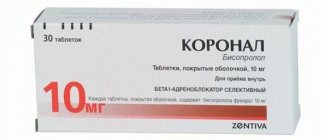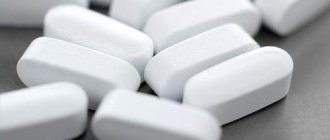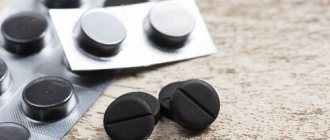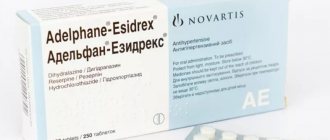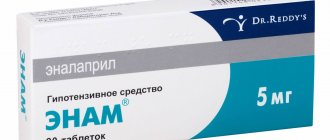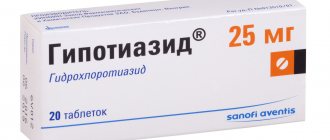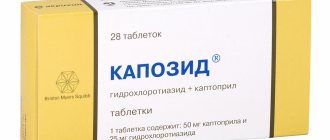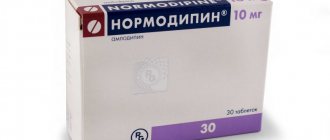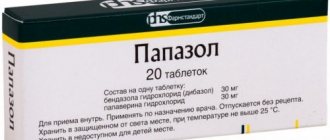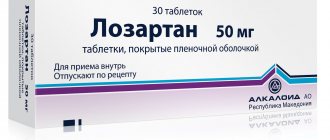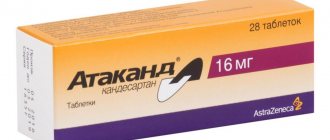pharmachologic effect
The active component, being an antagonist of calcium ions , causes blocking of calcium channels in the cells of cardiomyocytes and arteries. Thus, nifedipine affects the cardiac and peripheral vessels, causing them to expand. Does not affect the tone of the smooth muscle muscles of the veins. Such a reaction helps to lower blood pressure , reduce peripheral vascular resistance (mostly arterioles), reduce the oxygen needs of cardiomyocytes and, accordingly, all this leads to a significant reduction in the load on the heart as a whole. One of the functions of nifedipine is also the inhibition of platelet .
Indications for use
Phenigidine is prescribed for blood pressure, an increase in which is associated with the following cardiovascular diseases:
- arterial hypertension;
- hypertrophic cardiomyopathy;
- Raynaud's disease.
The medication is used to quickly relieve a hypertensive crisis and prevent attacks of angina pectoris ( ischemia ).
What else can Phenigidine be used for? In pulmonology, the drug is prescribed for:
- pulmonary hypertension;
- broncho-obstructive syndrome.
Who is it shown to?
What are Phenigidine tablets for? The main indication for use is arterial hypertension, relief of hypertensive crises, as well as relief of angina attacks. It also serves as a means to prevent angina attacks. This medication is also prescribed for the treatment of Raynaud's disease.
And now some detailed information about these appointments:
- Angina pectoris. This pathology develops due to the fact that the heart muscle does not receive enough oxygen. This is perhaps the most common form of coronary artery disease, which should definitely be interpreted as a signal of problems with cardiac blood flow. Men, based on statistics, suffer from angina pectoris three or even four times more often than women. Usually people over 40 suffer from this disease. Why does the disease occur? The cause of its appearance may also be atherosclerotic plaques, which can be compared to scale inside a kettle. If the flow of blood in the coronary arteries is disrupted, so-called traffic jams occur, and angina pectoris may begin.
- Arterial hypertension. It is a disease without a clearly defined beginning and without a clearly defined cause. But due to some negative factor, the blood begins to press with excessive force on the walls of blood vessels. This increases the pressure. You can live with the disease for several years, not only without noticing it, but also without attaching importance to its symptoms. This is dangerous, because it will definitely progress. And it can affect not only the heart and blood vessels, but also the brain, kidneys, and eyes.
- Hypertensive crisis. And this is one of the consequences of arterial hypertension, a vascular accident. This is the name for a severe emergency condition that is caused by an excessive surge in pressure. Against this background, neurovegetative disorders and disruptions of cerebral hemodynamics may appear, and acute heart failure may develop.
- Raynaud's disease. Under this name lies a disease that is more correctly called a pathological attack-like condition of small blood vessels, manifested by vascular spasm, impaired blood supply to the extremities, chin, ears, nose. The disease can occur due to prolonged stress, as well as under low temperature exposure.
All these pathologies may be a reason to prescribe Phenigidine. But only a doctor can decide this; any self-medication is excluded.
Contraindications
- low systolic pressure ( hypotension );
- severe heart failure
- collapse;
- individual hypersensitivity to the active substance or similar dihydropyridines;
- aortic stenosis;
- cardiogenic shock;
- myocardial infarction in the acute period;
- period of pregnancy and lactation .
Is it possible to use during pregnancy?
Official instructions prohibit the use of Phenigidine during pregnancy. This is due to the ability of nifedipine to overcome the placental barrier and negatively affect the child, causing irreparable changes.
If a course of treatment has already been prescribed and started, you should inform your doctor about your pregnancy and immediately stop using the drug.
Important! According to the instructions during pregnancy, Phenigidine can be used only for health reasons, when the need for treatment for a woman outweighs the likely threat of complications in the baby.
Side effects
- a sharp drop in blood pressure;
- swelling of the lower extremities;
- asystole;
- redness of the skin of the chest and face;
- tachycardia;
- bradycardia.
Possible disturbance of central nervous system reactions:
- moderate drowsiness ;
- sleep disorders;
- blurred visual perception;
- dizziness;
- limb tremors;
- migraine headache.
From the gastrointestinal tract:
- diarrhea;
- nausea;
- heartburn;
- depression of liver function.
Instructions for use of Phenigidine (Method and dosage)
The dosage is determined individually, taking into account several factors (age, concomitant diseases, general reaction of the body, etc.). As a rule, the minimum dosage is 10 mg (in some cases 20 mg), the number of doses is up to 4 times a day. For coronary artery stenosis, the minimum dose is 50-100 mcg. The instructions for Phenigidine provide for the maximum safe number of tablets per day - no more than 12 pieces.
To relieve attacks of angina pectoris and hypertensive crisis, it is necessary to take the drug sublingually until completely dissolved. Additionally, it is recommended to take a lying position for at least 1 hour.
Dose adjustment is carried out with extreme caution, gradually increasing or decreasing the amount of the active substance. To avoid side effects, it is advisable to take the drug with food.
The course of therapy is determined according to indications and usually lasts 1-2 months. Next, the attending physician selects another treatment regimen.
Release form and composition
Phenigidine is available in the form of tablets: flat-cylindrical, yellow or greenish-yellow in color (10 pcs. in blister packs, 5 packs in a cardboard pack; 25 pcs. in blister packs, 2 packs in a cardboard pack; 50 pcs. in polymer bottles, 1 bottle in a cardboard box).
Composition of 1 tablet:
- active ingredient: nifedipine – 10 mg;
- auxiliary components: milk sugar, calcium stearate, sucrose, polysorbate, potato starch.
Overdose
In case of an overdose, a dangerous decrease in systolic blood pressure occurs. The following symptoms are observed:
- bradycardia;
- collapse;
- arterial hypotension (can lead to loss of consciousness);
- disturbance of rhythm and conduction of the heart;
- headache.
If there are symptoms of poisoning, you should immediately perform gastric lavage and take activated charcoal . In especially severe cases, patients are prescribed a 10% calcium chloride solution intravenously.
Interaction
The drug has a more pronounced effect when taken simultaneously with other drugs to lower blood pressure, nitrates, diuretics, tricyclic antidepressants, Ranitidine , Cimetidine . In combination with beta-blockers, it can cause circulatory problems in the heart muscle and increase arterial hypotension.
The effectiveness of nifedipine is reduced when taken simultaneously with calcium supplements, Phenytoin , Rifampicin , Phenobarbital , Carbamazepine .
When taken simultaneously with Digoxin , Quinidine and Theophylline, the concentration of the latter in the blood plasma changes. Ethanol can enhance the effect of nifedipine, thereby causing dizziness, weakness, and coronary circulatory disorders.
At what pressure is the medicine used?
Before using the drug, you should understand at what pressure Phenigidine is used. The instructions for use state that it is prescribed in case of high blood pressure. The main active ingredient provides the antianginal and antihypertensive effect of the drug.
Based on the text of the instructions for use, Phenigidine tablets have the following properties:
- delay the penetration of calcium into cardiomycytes and vascular smooth muscle cells;
- reduce muscle tone of blood vessels;
- increase coronary blood circulation;
- reduce the amount of oxygen required by the myocardium.
Instructions for use The medicine Phenigidine is characterized by a high speed of action. Blood saturation with nifedipine reaches its highest level 30 minutes after oral administration.
special instructions
Phenigidine must be used under the strict supervision of a physician, and in case of myocardial infarction, diabetes mellitus , diseases of the hepatic system, pathology of cerebral circulation, hypovolemia, hemodialysis - only in a clinical setting.
The dose is increased and decreased gradually. Abruptly stopping treatment can be dangerous. For the elderly, a dose reduction is recommended due to reduced metabolism. For speedy absorption, it is recommended to dissolve the tablet under the tongue until completely dissolved. During treatment, alcohol and substances that lower blood pressure are not allowed.
During the treatment period, it is not recommended to drive various types of transport, machinery or carry out work that requires increased attention and concentration.
Important Notes
During therapy, alcohol intake in any doses and any strength is excluded. The combination of this drug with ethanol seriously increases the risk of developing a negative reaction from the cardiovascular system, as well as the central nervous system. The danger is great, although a huge number of hypertensive patients and “heart patients” underestimate it: they believe that alcohol only enhances the effect of the medicine, dilates blood vessels, and there is no risk. But, as statistics show, such risky combinations account for a significant percentage of vascular accidents.
Doctors also warn that taking Phenigidine should not be combined with driving or other activities that require high concentration. This is especially important in the first days of use, when there is a high probability of dizziness, malaise, and drowsiness.
Analogs
Level 4 ATC code matches:
Lacipil
Cordafen
Azomex
Nimodipine
Felodipin
Nifedipin-gel
Farmadipin
Amlotop
Nimotop
Tenox
Nifecard HL
Cordipin
Felodip
Normodipine
Norvask
Cordaflex
Lerkamen
Corinfar
Vero-Amlodipine
Amlodipine
There are many analogues of Phenigidine with a similar mechanism of action:
- Nifedipine;
- Cordipin;
- Myocardium;
- Nifecard;
- Corinfar.
Reviews about Phenigidine
Analysis of information on medical portals led to the conclusion that this drug is considered outdated, and many restrictions on use force doctors to prescribe safer and more modern analogues. Reviews report that the development of side effects is quite common. In this regard, many forum participants are worried about their health, but at the same time unanimously confirm the effectiveness of this drug, especially during attacks of angina pectoris and a sharp increase in systolic pressure.
Phenigidine differs from other antihypertensive medications in the presence of additional effects, because the active substance not only reduces blood pressure, but also has an antiatherosclerotic effect. The opinions of patients on this matter are divided: some choose an effective drug for hypertensive crises, turning a blind eye to pronounced side effects, while for others it is preferable to take safe, modern drugs that not only smoothly lower blood pressure, but also do not cause negative reactions.
Storage conditions
The blood pressure medication Phenigidine is registered in List B of drugs and is not dispensed without a doctor’s prescription.
According to the attached annotation, it should be stored in a place protected from children without access to light and humidity. Shelf life is 3 years at temperatures from 8 to 15 degrees Celsius.
Phenigidine price, where to buy
Phenigidine can be purchased at a pharmacy by presenting a doctor's prescription form. The price averages 14-31 rubles for 50 tablets and depends on the point of sale.
- Online pharmacies in RussiaRussia
- Online pharmacies in UkraineUkraine
Pharmacy Dialogue
- Phenigidine (tab. 10 mg No. 50) Health/Ukraine
25 rub. order
show more
Description
This pharmaceutical is produced in two dosage forms - tablets and drops. But the latter, it is worth noting, are rarely found on sale, which is why doctors often prescribe the medicine to patients in tablet form.
One serving contains 10 mg of the main component, nifedipine. The auxiliary composition is represented by lactose monohydrate, potato starch, gelatin, cellulose. Additional ingredients are used mainly for shaping.
Since the medicine is produced by different pharmaceutical companies, the appearance of the products, as well as the volume of packaging, may vary. But usually there are 50 tablets on sale, with ten in one blister. The medication is sold by prescription.
